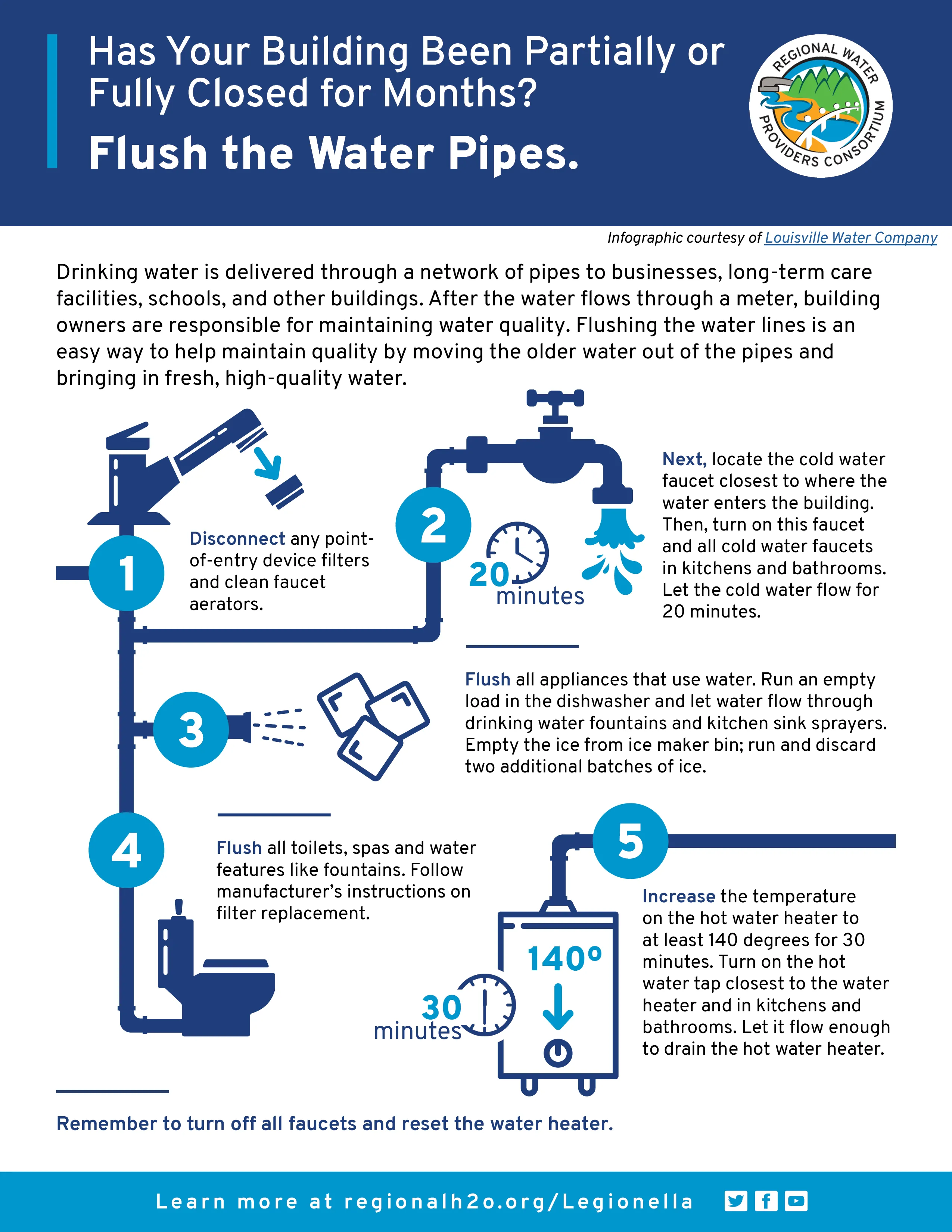The Consortium’s 25 water provider members are committed to providing safe and reliable drinking water to their customers every day, and this remains true during the COVID-19 pandemic.
Water Quality is a shared responsibility as we return to buildings.
Many offices, schools, and other buildings have been partially or fully closed due to the pandemic. Water sitting in pipes for long periods of time can create water quality challenges that should be addressed prior to returning to more normal operations.
Water providers control microorganisms, including Legionella, the bacteria that causes Legionnaires’ Disease, as part of their routine treatment operations. Once water enters a home or building, the resident or building manager is responsible for maintaining water quality in their home or building plumbing system.
Where to find safe building reopening resources
Building managers can find guidance on reopening buildings, information about potential hazards, and best practices for flushing from the Centers for Disease Control and Prevention (CDC) and the Oregon Health Authority (OHA). Your water provider may also have more information.
Water utilities provide safe drinking water from the source to your water meter. Once water enters a building, it is the responsibility of the owner or manager to maintain water quality. Use the steps outlined in the image at the bottom of the page, courtesy of Louisville Water Company to mitigate the risks of bacteria and mold in commercial plumbing.
If you live in a single-family home
Growth of Legionella can be controlled by maintaining your water heater at 140 degrees. Be aware that water at that temperature presents a burn risk. You or a plumber can take steps to prevent this risk by installing anti-scald valves or faucets.

